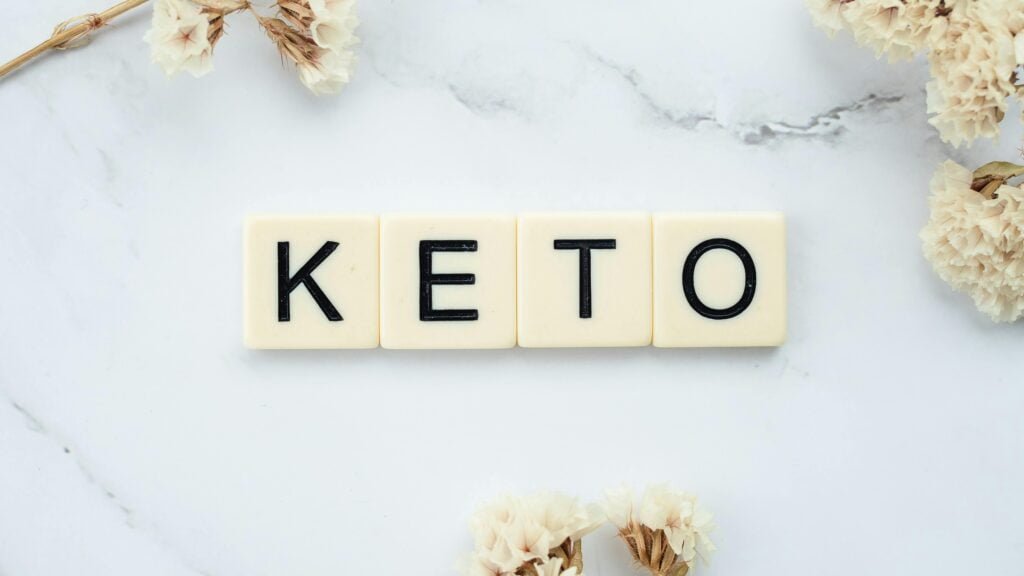The ketogenic diet, or keto diet, has gained massive popularity over the past few years, especially for those looking to lose weight and improve overall health. If you’re a beginner, the keto diet might seem a bit intimidating with its strict rules and food restrictions. However, once you understand the basics and see the potential benefits, you’ll realize it’s not as complicated as it appears. This guide will walk you through everything you need to know to get started on the keto diet.
What is the Keto Diet?

The ketogenic diet is a high-fat, low-carbohydrate diet designed to put your body into a metabolic state known as ketosis. Ketosis allows your body to efficiently tap into fat reserves for energy instead of using carbohydrates. This shift can lead to significant weight loss and other health benefits, such as improved mental clarity, better energy levels, and even reduced risk factors for certain diseases.
The Basics of the Keto Diet
By significantly lowering your carb consumption and upping your fat intake, the keto diet induces a metabolic condition called ketosis. Here’s how the macronutrient breakdown typically looks:
- Carbohydrates: 5-10% of your daily intake
- Protein: 20-25% of your daily intake
- Fat: 70-75% of your daily intake
To put it into perspective, on a 2000-calorie diet, you would aim for about 20-50 grams of net carbs per day.
Getting Started: What to Eat on Keto

Transitioning to a keto diet requires some changes in your food choices. Here’s a list of keto-friendly foods:
- Meats: Beef, pork, chicken, and lamb are all excellent sources of protein and fat.
- Fish: Salmon, mackerel, and sardines are fatty fish that offer a high content of omega-3 fatty acids.
- Eggs: A versatile and keto-friendly option.
- Low-Carb Vegetables: Leafy greens, broccoli, cauliflower, zucchini, and peppers are low in carbs and high in fiber.
- Dairy: Cheese, butter, and cream are great for adding fat to your meals.
- Nourish your body : with the healthy fats found in almonds, walnuts, flaxseeds, and chia seeds.
- Oils and Fats: Olive oil, coconut oil, avocado oil, and butter are staples in a keto diet.
- Avocados: A great source of healthy fat and fiber.
Foods to Avoid on Keto

Certain foods are high in carbohydrates and should be avoided on a keto diet:
- Sugary Foods: Sodas, candies, cakes, and desserts are loaded with sugar and carbs.
- Grains and Starches: Bread, pasta, rice, and cereals are significant sources of carbs.
- Fruit: Most fruits are high in sugar, but berries can be consumed in moderation.
- Beans and Legumes: Lentils, chickpeas, and beans are rich in carbs.
- High-Carb Roots: Potatoes, sweet potatoes, and carrots are among the root vegetables loaded with carbs.
Avoid Bad Fats: Skip processed vegetable oils, margarine, and trans fats.
Understanding Ketosis

Ketosis is the state where your body uses fat as its primary fuel source instead of glucose. When you reduce your carb intake, your body starts breaking down fat into ketones, which are then used for energy. Reaching ketosis can take anywhere from a few days to a week, depending on your body, activity level, and carb intake.
Signs of Ketosis:
- Increased Energy: Many people report feeling more energetic once they’re in ketosis.
- Mental Clarity: A sharper mind and improved focus are common benefits.
- Weight Loss: Rapid weight loss, especially in the first few weeks, is often observed.
- Reduced Appetite: Ketosis can naturally suppress hunger, making it easier to stick to your diet.
Benefits of the Keto Diet

The keto diet offers a variety of benefits beyond just weight loss:
- Weight Loss: The keto diet can help you shed pounds quickly, especially from the abdominal area.
- Blood Sugar Control: The keto diet can be beneficial for people with type 2 diabetes by stabilizing blood sugar levels.
- Improved Mental Focus: Many people experience better mental clarity and focus when in ketosis.
- Increased Energy: With a steady supply of energy from fats, many report more sustained energy throughout the day.
- Potential Health Benefits: Research suggests that the keto diet may reduce the risk of heart disease, cancer, epilepsy, and Alzheimer’s disease.
Common Challenges and How to Overcome Them

Starting a keto diet can come with its own set of challenges, especially in the initial phase. Here’s how to tackle them:
- Keto Flu: Some beginners experience flu-like symptoms (headache, fatigue, irritability) in the first few days. This is often due to electrolyte imbalance. Stay hydrated and consider taking supplements like magnesium, potassium, and sodium.
- Cravings for Carbs: Carbohydrate cravings can be strong initially. Combat this by eating enough fat to keep you satisfied.
- Handling social situations: such as restaurant outings can be tough. Plan ahead by looking at menus, bringing keto-friendly snacks, or simply explaining your dietary choices to friends and family.
Tips for Success on the Keto Diet
- Plan Your Meals: Planning your meals and snacks ahead of time can help you stay on track.
- Stay Hydrated: Drink plenty of water to help your body adjust and to avoid dehydration.
- Monitor Your Progress: Use tools like ketone strips or a blood ketone meter to monitor your ketosis levels.
- Incorporate Exercise: Regular physical activity can enhance your keto results and overall health.
- Be Patient: Remember, everybody is different. It may take some time to see results, so stick with it.
Conclusion
The keto diet can be a highly effective way to lose weight, boost your energy, and improve your overall health. Like any major lifestyle change, it requires some adjustment and dedication, but with the right mindset and information, anyone can succeed on the keto diet. Start by educating yourself, planning your meals, and listening to your body.
Try this product= The Ultimate Keto Meal Plan | Downloads